Catalog
Search
7 products
View:
- Selected: 0Areas of use
- Selected: 1Item names
- Selected: 0Manufacturer
- Selected: 0Made in
- Selected: 0Additional
View:
7 products
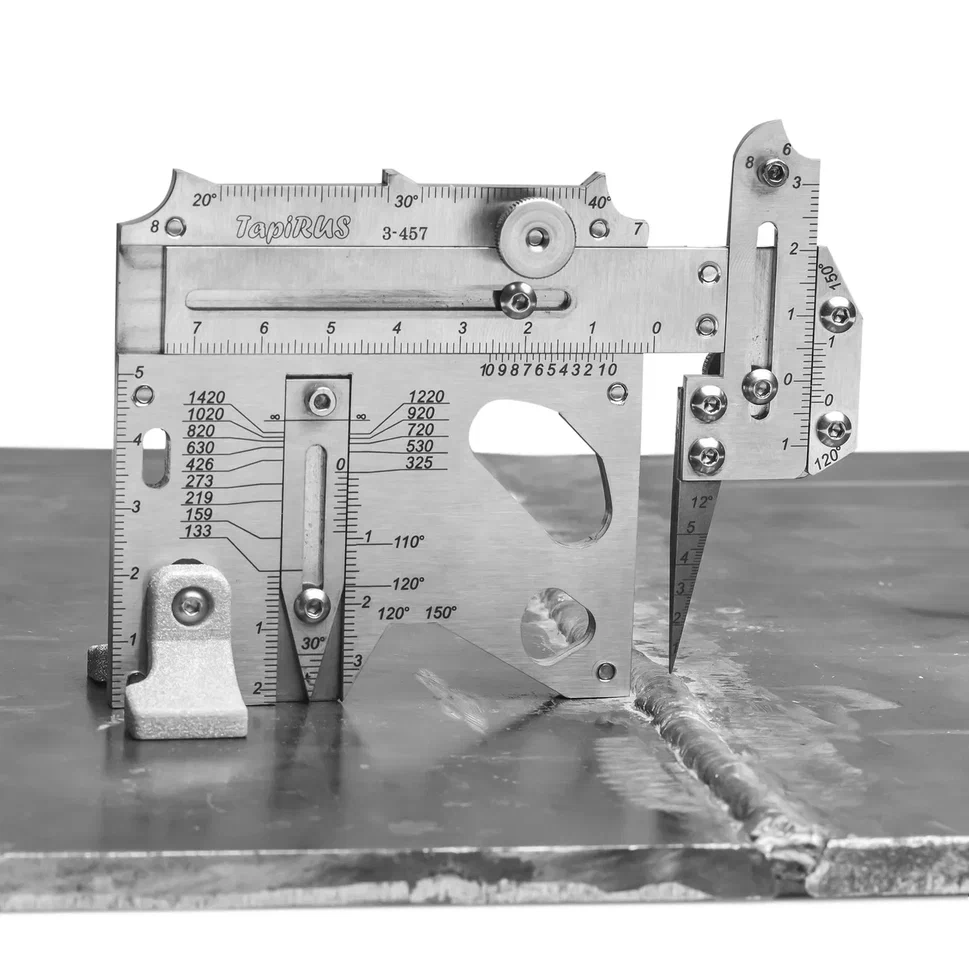
UShS "Tapirus" with cover and supports
from
25 500 ₽
The UShS TapiRus is designed to replace numerous templates and devices used in visual and measuring quality control of welded joints. It is approved as a means of measuring the geometric parameters of welded joints and surface defects during visual and measuring control (VIC) and supplied with verification. It allows you to determine most of the geometric parameters of welded joints and surface defects: the width and convexity of the seam, the depth of the cut, the amount of edge displacement, the angle of the angular seam, the angle of the bevel and the gap, etc. Equipped with supports that allow you to uniquely position the template on a curved surface. To carry out measurements with an error of 0.1 mm, scales with a vernier are applied to the TapiRUS surface. It contains a number of gauges for assessing the smooth transition from the deposited to the base metal, the size of the cathets, radii and angles of cutting edges. Equipped with a probe with a replaceable measuring needle to determine the size of gaps and heights / depressions.
The development, preparation for production and manufacture of TapiRus were carried out exclusively in digital format.
The latest laser and additive technologies are used in the production of TapiRUS:
high-precision laser cutting machines in inert gas;
five-axis CNC machining centers;
ultra-precise color laser engraving of the entire product assembled;
laser stereolithography (SLA) is a technology of layer–by-layer synthesis of a material from a liquid photopolymer.
Advantages
Easy to install. Accurate positioning along the normal to the surface of the object of control and stability of the position when performing measurements.
Functionality. Measurement of most geometric parameters of welded joints and surface defects.
Measurement accuracy. The measurement error on the template scales does not exceed 0.1 mm.
Modernity. Online calculator ergonomic accessories smart version.
More detailed information can be found on the website tapirus.info
MEASURED PARAMETERS AND DEFECTS
VIC at the stage of input control
wall thickness
depth of corrosion ulcers on the base metal
the depth of corrosion ulcers on the weld
the depth of scratches (risks), a bully on the base metal
edge bevel angle
the amount of blunting
geometric parameters of the dent
VIC during assembly (preparation for assembly)
edge offset
withdrawal (angularity) of edges
the gap in the cutting
the height of the potholders
angular displacement
VIC in the welding process (surfacing)
edge offset
height of the root (filling) layer
withdrawal (angularity) of edges
angular displacement
VIC of finished welded joints (structures)
edge offset
angular displacement
the height of the reinforcement of the seam
the height of the bulge (when welding elements of different thickness)
the width of the reinforcement of the seam
withdrawal (angularity) of edges
the depth of the sinking between the rollers
incomplete filling of the cutting edges
scaliness of the seam surface
smooth transition
undercut depth
seam crater depth
technical specifications
Measured parameter Scale Range,mm Error, mm
Depth, mm H 0...20 ±0.1 (in the range 0...10 on), ± 0.5 (in the range over 10...20)
Height, mm H 0...6 ±0.1
Width, mm W 0...55 ±0.1 (in the range 0...10 on), ± 0.5 (in the range over 10...20)
Clearance, mm N 0...5 ±0.1
Dullness, mm F, G 0...25 ±0.5
Specifications
Overall dimensions, mm, no more
(without supports) 115x85x15 ± 0.5
(with supports) 115x85x42 ±0.5
Average time to failure, cycles,
at least 55,000
Weight, kg, not more than 0.22
Average service life, at least 1 year
RII MNPO SPEKTR
Moscow
Produced in: Moscow

measuring air-thermal installation ASESH-8-2
1 supp.
Implements a thermogravimetric (air-thermal) method for determining the mass fraction of moisture, based on measuring the mass of the sample of the analyzed substance before and after drying, followed by calculating the values of the mass fraction of moisture.
Air-thermal measuring installations ASESH-8 are registered in the State Register of Measuring Instruments under No. 58526-14, have a certificate of approval of the type of measuring instruments OC.C.31.005 And No. 56847.The installations undergo initial verification and have the appropriate certificate.
General characteristics:
- The presence of two independent drying chambers.
- Possibility of simultaneous determination of humidity of 12 samples:
Each drying chamber of the installation consists of 6 independent cells. You can put 2 buckets in each cell. Total capacity of the ASES Installation-8-2 – 24 bucs.
- Convenient access to the cells of the drying chamber:
On the front side of the cabinet there are four doors for access to the cells.
- Natural ventilation:
The absence of rotating elements ensures absolute noiselessness of operation and a long service life.
- Built-in timer:
The ASESH-8-2 installation has 4 timers, by means of which the end of the drying process is monitored in each section with the output of an audible signal and a light indication.
- The output to the operating mode is 30 minutes:
The power of air-thermal installations is 1200 watts. When entering the operating mode, the power consumption is the same as that of similar cabinets with low power.
SCOPE OF DELIVERY :
1. Installation of ASESH-8-2
2. AO-3 cooler
3. Auxiliary accessories
4. Air-heat control unit:
5. Interface unit for connecting a personal computer with a scale (available on request);
6. software for processing and archiving measurements of humidity determination data;
The program allows you to:
Set the operating temperature in the chambers via a personal computer
Set the necessary parameters of the sample drying process according to the selected method
Display all current processes (predrying, drying, cooling) and parameters (temperature, time) during the tests. To monitor the process by means of an electronic timer with the output of an audible signal.
Record all weighing results.
Perform humidity calculations in accordance with standardized methods. To calculate the humidity with pre-drying, the program uses formulas that allow you to get an accurate result.
Archive and print test results.
According to the test results of FSUE "UNIIM", it is recommended to use a laboratory mill of the BLIZZARD series for sample preparation.
SCOPE OF APPLICATION:
1. Crop production, agriculture and forestry.
2. Products of meat, dairy, fish, flour-milling, feed and microbiological industries.
3. Food industry products.
4. Cellulose, paper, cardboard and products made from them.
5. Medicines, chemical and pharmaceutical products and medical products.
6. Building materials.
7. Products of the logging and sawmilling and woodworking industry.
8. Ground, soils, mineral fertilizers.
Technical specifications:
The measurement range of the mass fraction of moisture, % from 0.5 to 80
Operating temperature range, °C from 45 to 160
The error of setting and maintaining the temperature in the working area, ° C, not more than 2.0
Limits of permissible absolute error, % ± 0.5
Power consumption, V• A, not more than 1200
Overall dimensions, mm 240 × 260 × 640
Overall dimensions of the cell, mm 75 x 40 x 165 (depth)
Weight, kg 28.4
GK EKAN
Saint Petersburg
Produced in: Saint Petersburg
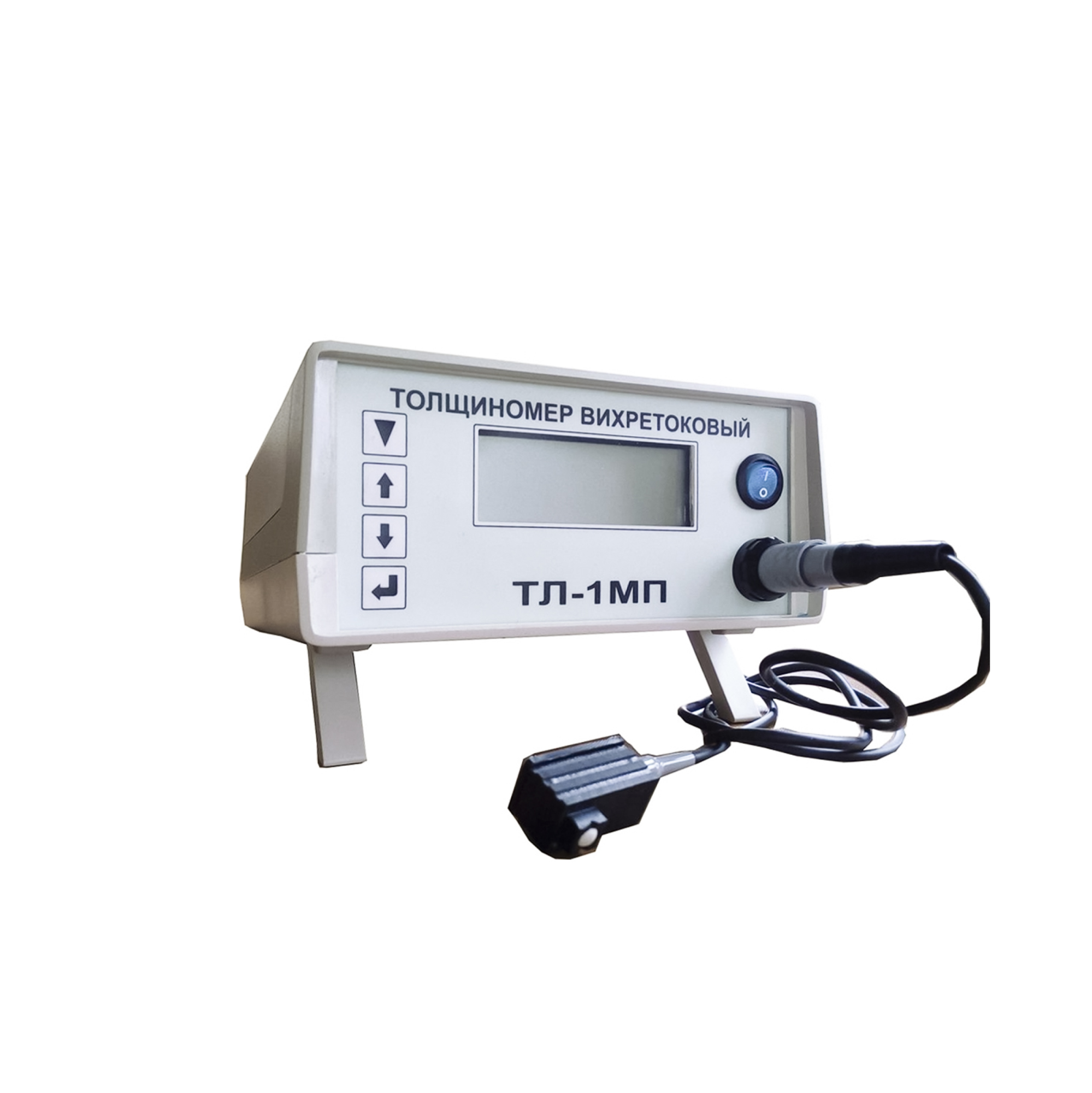
TL-1MP Eddy Current Thickness Gauge
from
1 110 000 ₽
The principle of operation of the electroplating thickness gauge:
A converter with an induction coil on a ferrite core generates a high-frequency signal (frequency 1 MHz), which is used to create an alternating magnetic field. As the converter approaches the conductive surface, an alternating magnetic field creates eddy currents, the magnitude of which depends on the characteristics of the metal base and the thickness of the coating. In turn, eddy currents create their own electromagnetic field, which can be received by an induction coil. The resulting signal enters the amplitude detector, after which it is transmitted to the processing unit, where it is digitized and displayed on the device readout. In addition to signal conversion, the processor is used to set the required gain, as well as the initial voltage offset, depending on the characteristics of the materials in the controlled object.
Features of the device design and advantages of the measurement method
The TL-1MP eddy current thickness gauge consists of an electronic unit with a display, a power supply and a converter. The device is controlled using four buttons located on the front panel of the electronic unit. The converter can be disconnected from the electronic unit during transportation or for convenience of storage. The advantages of the device include:
- convenience and ease of operation;
- small size and light weight, allowing the TL-1MP to be used in difficult conditions with limited access to the controlled area of the facility;
- high measurement accuracy;
- factory setting of the measuring instrument to the customer's requirements;
- high degree of localization of defects due to the small size of the converter.
Scope of application:
The service life of metal parts and components of mechanisms used in mechanical engineering is largely determined by their resistance to corrosion and surface wear. However, not all metals are sufficiently resistant to external destructive influences. Therefore, various electroplating coatings made of zinc, nickel, chromium, cadmium, tin, copper, silver and other metals are used to protect them. Even small fluctuations in the thickness of protective coatings can significantly affect the performance characteristics of parts, their service life, and interaction with other components. Therefore, measuring the thickness of the metal coating applied by the electrochemical method is important when conducting quality control of products. The use of the TL-1MP eddy current thickness gauge allows non-destructive quality control of electroplating coatings on the surface of metal parts in mass production conditions with special requirements for product quality. The device detects even small mechanical defects, the effects of abrasion, erosion, corrosion on the surface. Due to its ease of use, efficiency and reliability, eddy current thickness measurement is a standard method of quality control of products with electroplated coatings in such industries as mechanical engineering, aerospace industry.
RII MNPO SPEKTR
Moscow
Produced in: Moscow

Flowmeter-counter ultrasonic Oriole
from
200 000 ₽
The ultrasonic Oriole flow meter is designed to measure the volumetric flow rate and volume of liquid in pressure pipelines.
The measured medium can be any homogeneous isotropic liquid of various densities, including:
clean cold and hot water supply and heating systems (up to +160 °C);
natural water is clean and of a low degree of pollution;
wastewater of low and medium degree of contamination;
chemical solutions of acids, alkalis and other chemically aggressive media;
mineral, synthetic and semi-synthetic machine oils;
food products (vegetable oil, juices, syrups, vodka, ketchups, dairy products, etc.).
Secondary converter
It is available in both stationary (~220 V) and portable versions with autonomous power supply.
Primary converters
Mortise, contactless overhead outside and full-bore primary converters embedded in the process allow you to place the measurement gate on any water pipe made of any material, taking into account design features.
Pipe sizes
Du, mm: 25, 32, 40, 50, 65, 80, 100, 150, 200, 250, 300, 350, 400, 500, 600, 700, 800, 900, 1000, 1200, 1400, 1600, up to 6000 mm
ICF VOLGA
Moscow
Produced in: Moscow
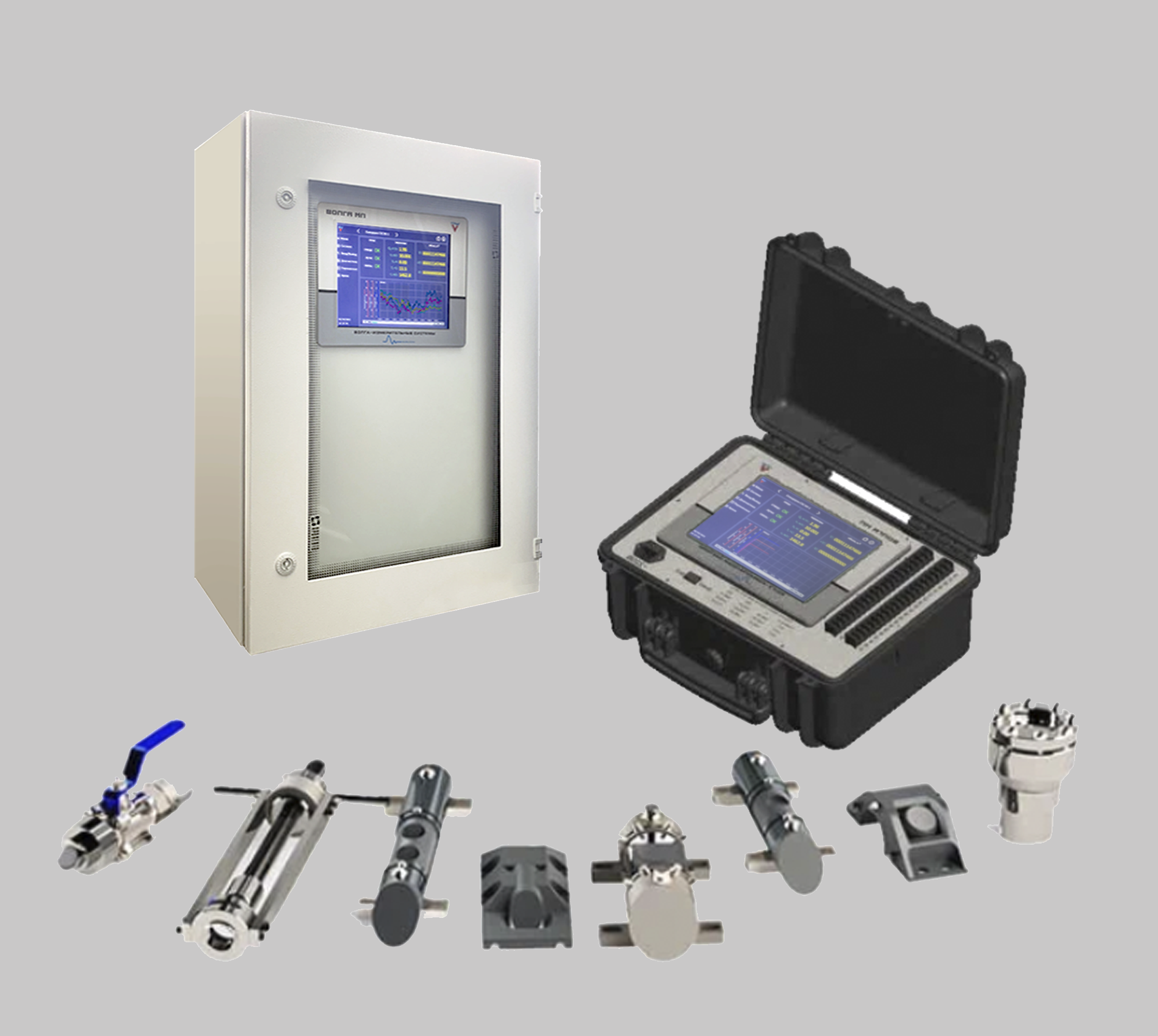
Acoustic ultrasonic flow meter Volga ML
from
400 000 ₽
The flow meter is fully developed by Russian specialists in the field of acoustics, hydraulics and electronics, and is designed to measure the volumetric flow rate and volume of water in pipelines, mainly medium and large, under pressure, non-pressure and combined (pressure-free) flow modes. The flowmeter is based on ultrasonic "time-pulse" multipath technology for measuring the flow velocity in the measuring range. In addition, depth sensors (primary transducers) - hydrostatic, radar contactless, ultrasonic underwater or ultrasonic contactless - are used to measure the flow in water ducts with a combined or non-pressure flow mode. In the presence of deposits affecting the shape and area of the live section of the flow, sediment level sensors are used.
Secondary converter
It is available in both stationary (~220 V) and portable versions with autonomous power supply.
Primary converters
Inset and overhead primary converters from the inside allow you to place the measurement gate on any water pipe made of any material, taking into account design features.
Pipe sizes
Du, mm: 200, 250, 300, 350, 400, 500, 600, 700, 800, 900, 1000, 1200, 1400, 1600, up to 15000 mm
The Volga ML acoustic ultrasonic flowmeter is registered as a type of measuring instrument in the Federal Information Fund for Ensuring the Uniformity of Measurements for No. 78414-20 (MP 2550-0361-2019).
The Volga ML acoustic ultrasonic flow meter has been recognized as the winner in the nomination Best Technology of the International Environmental Award EWA Award 2020.
ICF VOLGA
Moscow
Produced in: Moscow
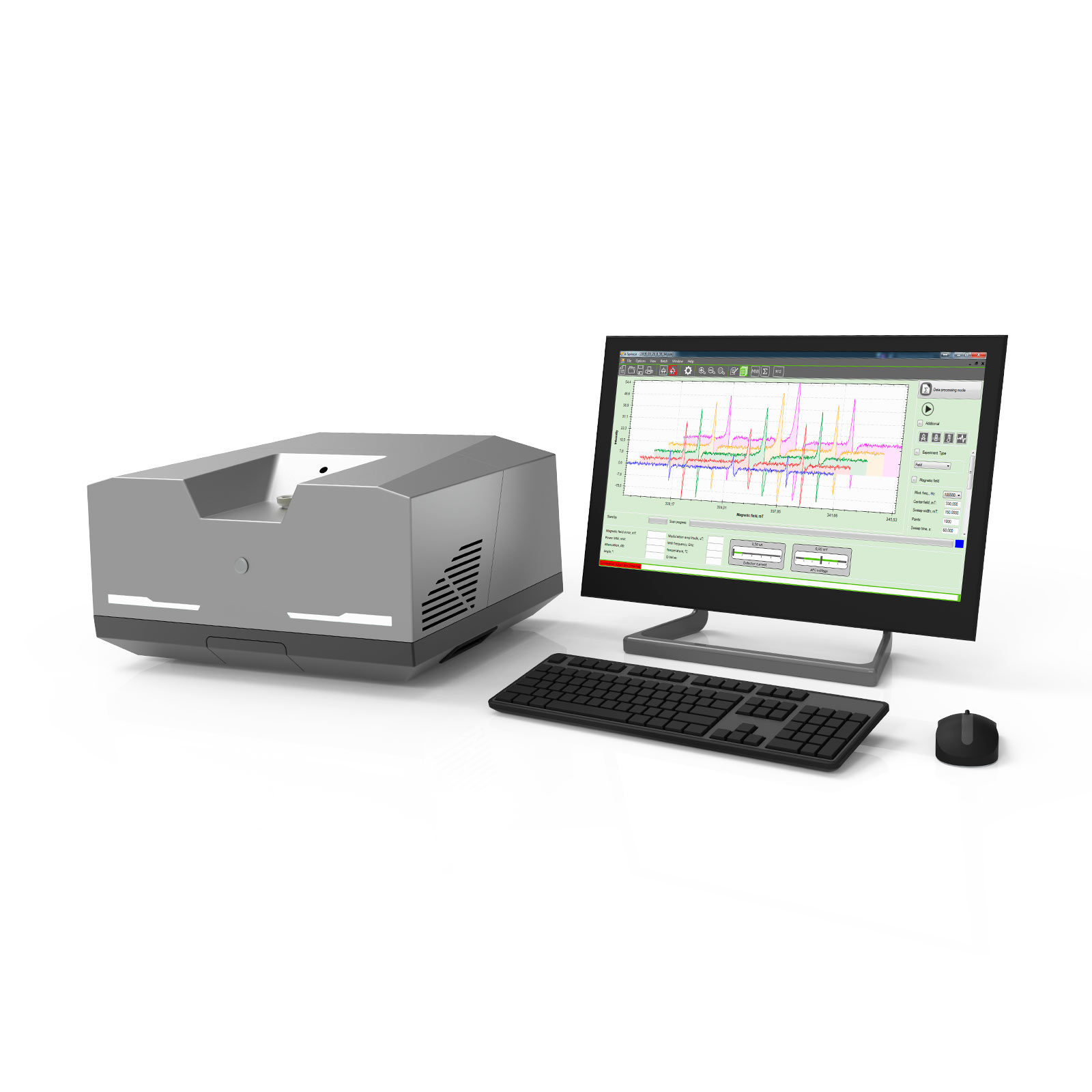
EPR spectrometer CMS8400 NEO
The CMS8400 NEO is a compact electron paramagnetic resonance spectrometer designed for routine research in physics, chemistry, biology and related scientific fields for direct detection of free radicals and paramagnetic materials. The CMS8400 NEO can be used in both laboratory and industrial settings in the mode of on-line measurements, embedded in technological processes, thus providing control of parameters and reactions in the production process.
Additional accessories and adapted software can make the spectrometer an analytical tool and allow to implement new complex applications in medicine, petrochemistry, brewing, sanitary and hygienic control, as well as in other industries.
ADVIN Smart Faktory
Minsk
Produced in: Belarus
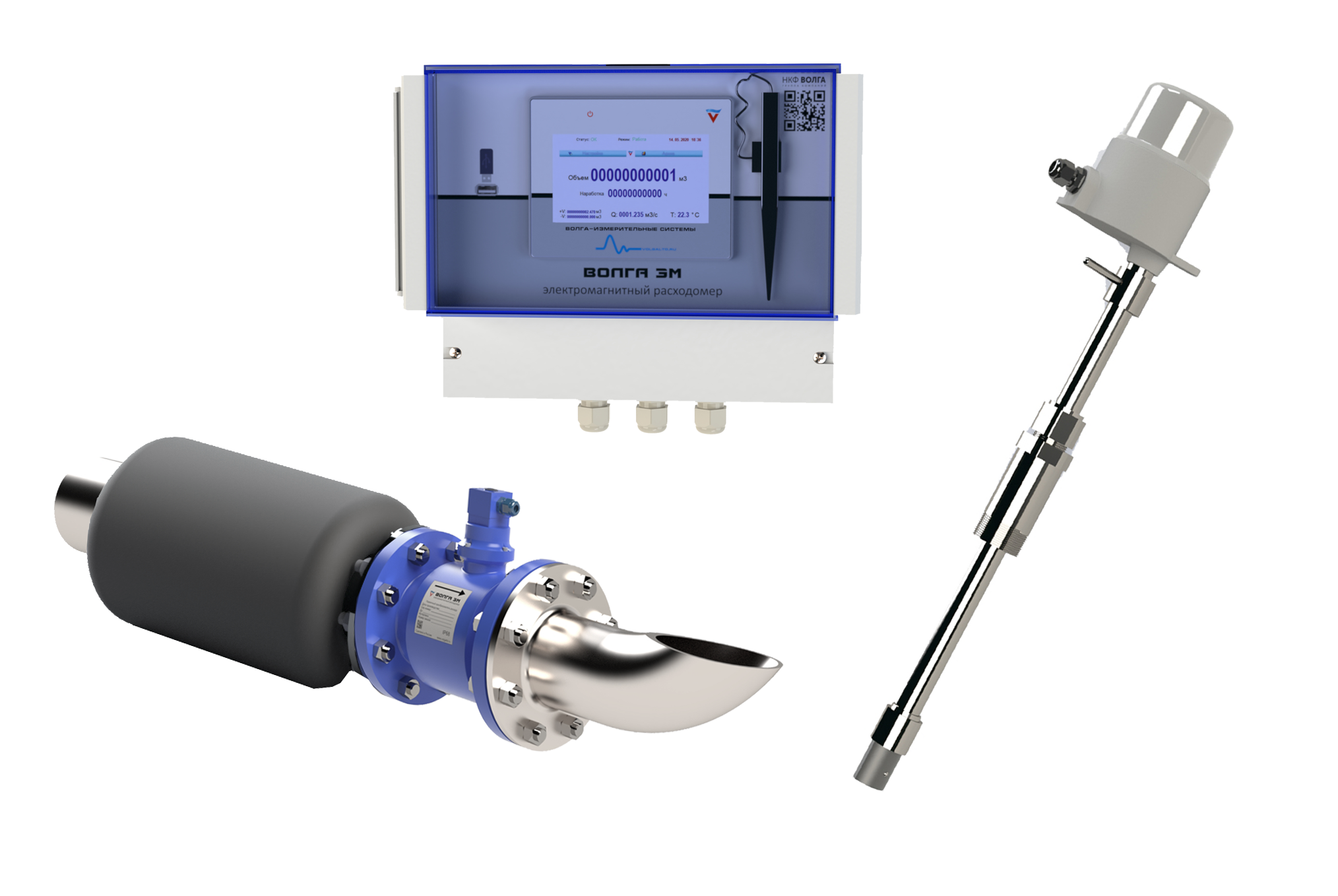
Electromagnetic flow meter Volga EM
from
300 000 ₽
The Volga EM electromagnetic flowmeter is designed to measure the volumetric flow rate of drinking, natural, purified and waste water in pressure and non-pressure water pipelines. The device is designed specifically for use as part of commercial metering units and meets all the requirements for measuring equipment used for financial settlements of economic entities.
The flow meter can be equipped with connecting fittings that allow the measuring sensor to be installed in a water duct with a non-pressure flow mode, for example, in a sewer collector (the so-called "L-system").
Secondary converter
It is available in both stationary (~220 V) and portable versions with autonomous power supply.
Primary converters
PP – full-pass primary converter
PPM is a full–pass primary converter for low costs and installation in L-systems
BP – mortise rod primary converter
Pipe sizes
Du, mm: 25, 32, 40, 50, 65, 80, 100, 125, 150, 200, 250, 300 mm
ICF VOLGA
Moscow
Produced in: Moscow
